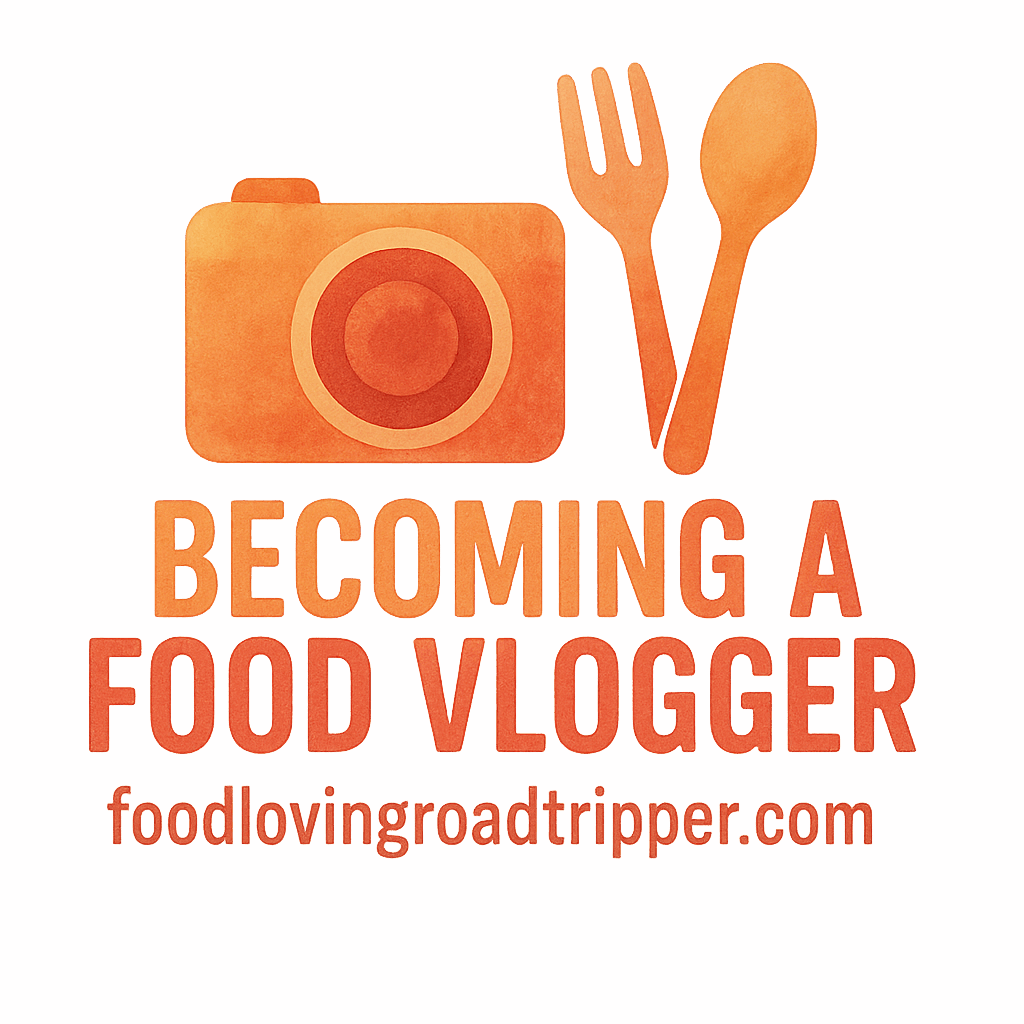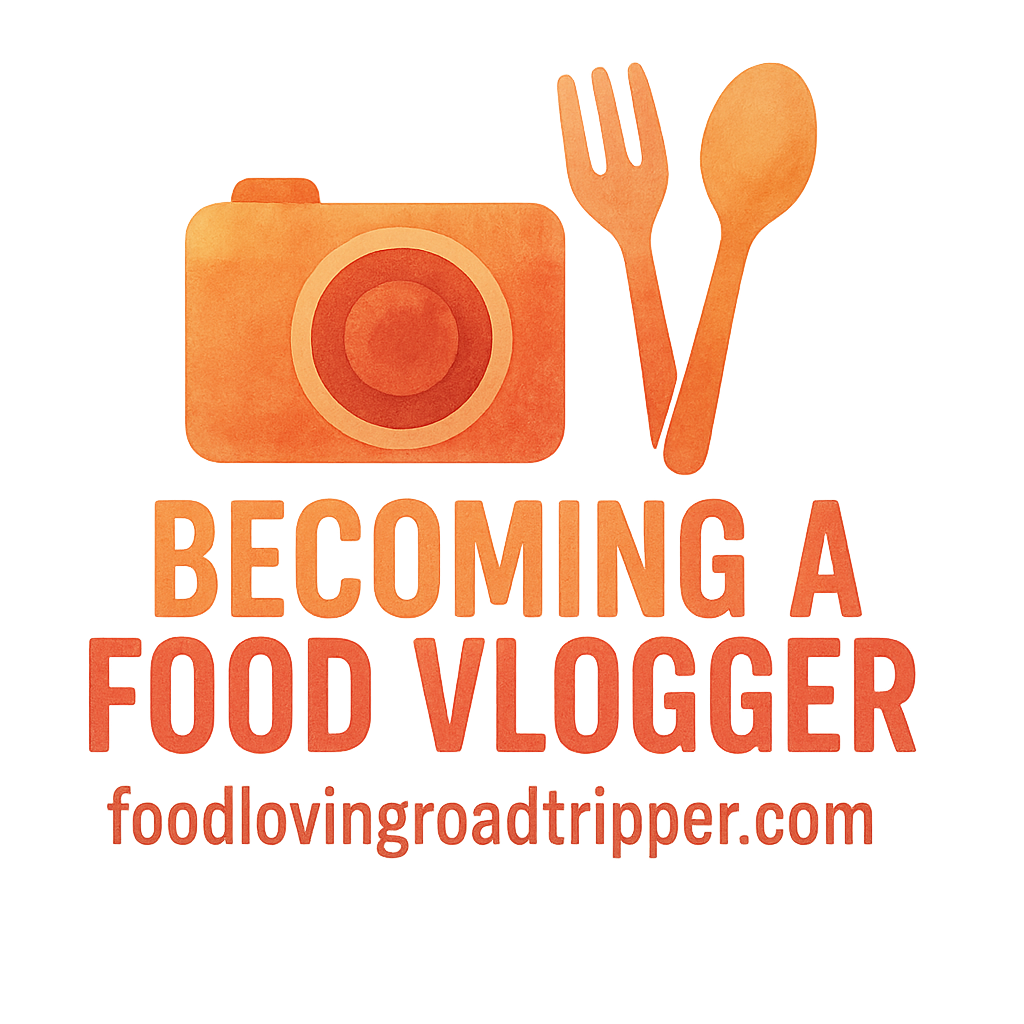Introduction: Why Food Vlogging is So Popular
Food vlogging has grown into a powerful and popular form of content creation. With the rise of platforms like YouTube, TikTok, and Instagram, food lovers and creators are showcasing their passion for cooking, tasting, and food culture to a global audience. But what does it take to become a successful food vlogger? It’s more than just cooking; it’s about telling a story, creating visually stunning content, and connecting with your audience. Whether you’re just starting or looking to take your vlogging to the next level, these 10 essential skills will help you master the craft. For more insights into content creation, check out Food Loving Roadtripper’s Content Creation Guide.
1. Culinary Knowledge and Passion
What Makes a Great Food Vlogger
A food vlogger must have a genuine passion for food. This passion can be expressed through storytelling and a deep understanding of what makes a recipe truly unique. Whether you’re cooking traditional dishes or experimenting with modern twists, your knowledge will shine through and connect with your audience.
Understanding Ingredients and Techniques
Being able to explain ingredients and cooking techniques in a simple yet engaging way will set your content apart. Mastering basic culinary techniques allows you to confidently navigate both familiar and unfamiliar recipes. For more tips on getting started in food vlogging, check out Food Loving Roadtripper’s Getting Started Guide.
2. Storytelling and Narrative Skills
How to Create a Compelling Story
Food vlogging is all about storytelling. Whether you’re making a family recipe or visiting a food truck, sharing the history and the “why” behind your dishes helps create an emotional connection with your viewers. You can even share personal stories of how food plays a role in your life or travels.
Building an Emotional Connection with Viewers
To build loyalty, share stories that resonate with your audience. This connection is often what turns casual viewers into dedicated followers. For more about creating meaningful connections with your audience, explore Food Loving Roadtripper’s Engagement Tips.
3. Camera and Filming Techniques
Understanding the Basics of Camera Work
It’s essential to understand the fundamentals of filming, including focus, framing, and shot composition. With the right techniques, you can elevate your food vlogs to look professional, even with basic equipment.
Lighting, Angles, and Composition
Proper lighting is a game-changer. To capture food at its best, you’ll need to experiment with natural light or invest in affordable lighting kits. Exploring different angles can add visual interest and keep your videos fresh. For more on the equipment needed for food vlogging, visit Food Loving Roadtripper’s Equipment & Tools.

4. Editing and Post-Production
Video Editing Software to Use
Editing your footage is where your vlogs come to life. You can use tools like iMovie, Adobe Premiere, or Final Cut Pro. These software options offer various features to enhance your video quality, from cutting footage to adding transitions.
Adding Music and Effects to Elevate Your Content
Adding music and sound effects can make your vlogs more engaging. Choose music that reflects your personality or matches the vibe of your content. For great tips on how to enhance your editing process, visit Food Loving Roadtripper’s Editing Guide.
5. Engaging with Your Audience
Interacting with Viewers through Comments
Engagement is key to growing your audience. Respond to comments, ask for feedback, and take the time to acknowledge viewers who share your content. Building a two-way relationship with your audience will create a loyal community around your vlogs.
Building a Loyal Foodie Community
Creating content that speaks directly to your audience’s interests can turn casual viewers into devoted followers. By regularly engaging with them on platforms like YouTube and Instagram, you’ll cultivate a community that shares your passion for food. For more tips on building your online community, see Food Loving Roadtripper’s Growth Marketing.
6. Social Media Marketing
Promoting Your Food Vlogs on Instagram, TikTok, and Facebook
Social media is a key tool in promoting your food vlogs. Platforms like Instagram, TikTok, and Facebook offer great opportunities to engage with new audiences. Share sneak peeks, behind-the-scenes clips, or interactive stories to keep your followers engaged.
Hashtags and Social Media Strategy for Food Vloggers
Hashtags are one of the most effective ways to increase the visibility of your content. By using relevant hashtags, you can ensure your vlogs reach a wider, interested audience. To learn more about growing your reach on social media, visit Food Loving Roadtripper’s Growth Tips.
7. SEO and Keywords
Optimizing Your Videos for Search Engines
Search engine optimization (SEO) is essential for visibility. By optimizing your video titles, descriptions, and tags with relevant keywords, your food vlogs will have a better chance of being discovered.
Writing Captions and Descriptions with SEO in Mind
Write clear and compelling video descriptions, making sure to incorporate your target keywords in a natural way. This helps search engines understand your content and makes it easier for viewers to find you. For more insights on SEO for vlogs, check out Food Loving Roadtripper’s SEO Tips.
8. Equipment and Tools
Must-Have Equipment for Food Vlogging
If you’re serious about food vlogging, investing in the right equipment is crucial. Key items include a good camera, a tripod, a microphone for clear audio, and proper lighting to ensure your food looks mouth-watering.
Budgeting for Gear as a New Food Vlogger
Starting out doesn’t mean you have to splurge on expensive equipment. There are budget-friendly options available that still deliver excellent results. Check out Food Loving Roadtripper’s Budget Guide for ideas on affordable vlogging gear.
9. Monetization Strategies
Ways to Make Money from Food Vlogging
Once you’ve built a dedicated following, it’s time to start monetizing your content. Ad revenue, affiliate marketing, and sponsored content are popular options for food vloggers.
Sponsored Content and Affiliate Marketing
Sponsored content and affiliate marketing are two of the most common ways food vloggers make money. By partnering with food brands or promoting kitchen gadgets, you can earn commissions while sharing your love for food. Explore more monetization tips in Food Loving Roadtripper’s Monetization Guide.
10. Consistency and Patience
Building a Vlogging Schedule
Consistency is crucial when it comes to growing a food vlogging channel. Posting regularly helps keep your audience engaged and shows that you’re committed to providing valuable content.
Staying Motivated through the Ups and Downs
Food vlogging, like any creative pursuit, has its challenges. There will be days when your video doesn’t get as many views as expected or when you’re feeling burned out. Staying patient and sticking to a schedule will help you grow in the long term. For strategies to stay motivated, see Food Loving Roadtripper’s Long-Term Growth Tips.
Conclusion: Mastering These Skills Will Take Your Vlogs to the Next Level
Food vlogging is a combination of creativity, technical skills, and a genuine love for food. By mastering these 10 skills, you’ll be well on your way to creating content that resonates with viewers, grows your audience, and allows you to monetize your passion. Remember, the journey to success in food vlogging is gradual, but with persistence and dedication, you’ll soon see the fruits of your labor.
FAQs
- What is the best camera for food vlogging?
The best camera for food vlogging depends on your budget. For beginners, the Canon EOS M50 or Sony ZV-1 are great choices. As you progress, consider investing in a DSLR or mirrorless camera for better video quality. For a budget-friendly option, check out Food Loving Roadtripper’s Budget Gear Guide. - How do I improve my food vlogging skills?
Practice is key! Watch other food vloggers, experiment with your filming techniques, and invest time in learning video editing software. For more tips on improving your skills, visit Food Loving Roadtripper’s Tips. - How can I grow my audience as a food vlogger?
Consistency, engagement, and promotion on social media are essential. Don’t forget to interact with your followers through comments and social media. To grow your reach, explore Food Loving Roadtripper’s Growth Marketing Guide. - How do I make money from food vlogging?
Monetization comes in many forms: ad revenue, affiliate links, sponsored content, and selling your own products. Check out Food Loving Roadtripper’s Monetization Strategies for more details. - What equipment do I need for food vlogging on a budget?
A simple camera, tripod, and good lighting can take your food vlogs to the next level without a huge investment. For affordable gear options, visit Food Loving Roadtripper’s Equipment Guide. - How do I engage with my food vlog audience?
Respond to comments, share behind-the-scenes content, and always ask for feedback. Building a community is key. For more engagement tips, explore Food Loving Roadtripper’s Engagement Guide. - What’s the most important skill for a food vlogger?
Consistency is the most important skill. Creating content on a regular schedule keeps your audience engaged and ensures that your channel continues to grow.


